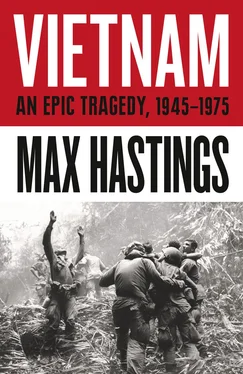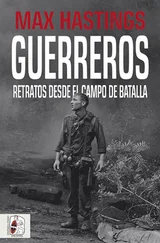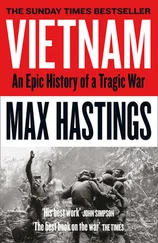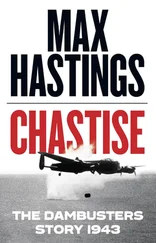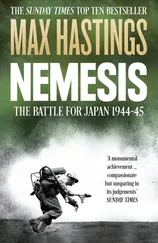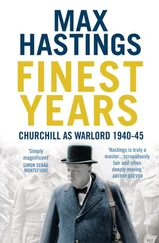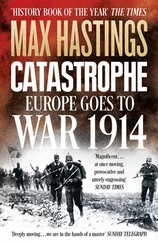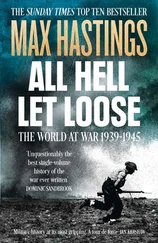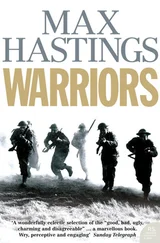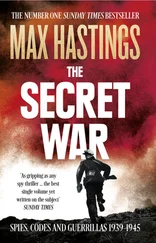Giap prepared to repeat his success against Gabrielle, further north, defended by the 7th Algerian Tirailleurs, who ate supper in anticipation of a busy night. Sure enough, at 1800 on the 14th, just before sunset, men of the Vietminh’s 308th Division hurled themselves forward. A bitter struggle continued into darkness, lit by flares dropped from an orbiting Dakota. For some hours the defenders clung on, with French artillery harrowing the Vietminh infantry. At 0330 on the 15th, however, renewed communist fire fell on the hill, scoring a hit on the command post which killed or wounded most of its occupants. The French hoped to counter-attack at daybreak, and defending officers were heartened by news of tanks and paras concentrating in readiness. The Algerians had had enough, however. At 0700 on the 15th the first Vietminh soldiers appeared on the crest of Gabrielle. The Tirailleurs, including one company which had not been engaged, scrambled out of their trenches and ran pell-mell down the hill. The communists took possession, and found the battalion’s concussed colonel among 350 prisoners and eighty dead. The newly-arrived Vietnamese battalion was committed to counter-attack across open ground, but in the face of shellfire its men faltered: the assault was abandoned as Tirailleur fugitives trickled into the camp’s shrunken perimeter.
French leaders reeled under this second blow within twenty hours, and chose to attribute blame for Gabrielle’s loss to its officers. Navarre observed in a letter to Marshal Juin in Paris that the collapse of morale had been ‘most conspicuous in the command elements, which had previously displayed high confidence (too much of it, indeed) and tended to veer from one extreme to the other’. The general dispatched two volunteer colonels to Dienbienphu to replace those who had fallen. With the air force conspicuously failing to interdict Giap’s supply routes, Navarre instead proposed a ludicrous scheme to seed rainclouds over the jungle, inundating the communists.
In the camp, several of de Castries’ headquarters officers suffered nervous collapses: the chief of staff sat motionless in his bunker, refusing to remove his helmet. De Castries himself exercised command, but not leadership: he offered his men no ringing oratory nor comradely cheer, instead apparently resigning himself to the administration of a descent towards disaster. Communist howitzers turned their attentions upon French artillery, of which the gunners suffered terribly: one-third of 155mm crews and more than 50 per cent of de Castries’ 120mm mortarmen became casualties. By the third day of battle, half the garrison’s stock of twenty-seven thousand shells was already expended. The French had lost their forward observation positions, so that their remaining guns were forced to fire almost blind, dependent for targets on air photographs of Giap’s lines processed in Hanoi, then parachuted into the camp.
De Castries’ artillery commander, the jolly, roly-poly Col. Charles Piroth, had rashly promised that he could suppress any guns the communists deployed. Now he suffered a lacerating verbal assault from Langlais about the failure of his batteries during the first two nights’ fighting. The colonel retired to his bunker, sobbing despairingly, ‘I am completely dishonoured.’ In truth, it was his superiors who merited disgrace, for choosing to fight a battle in such a place, pitting twelve thousand French and colonial troops against five times their number of Vietminh, led by a commander of brilliance. Piroth nonetheless clutched a grenade to his body, then jerked forth the pin. De Castries sought to conceal the colonel’s suicide, but the news quickly leaked, and was published in Le Monde . On the night of 14 March several shells fell on the main dressing station, killing fourteen men in the triage room and nine post-operative cases, as well as destroying the X-ray facility. Thereafter the wounded suffered terribly: before the end, doctors and surgeons treated 2,665 men, performed 934 operations and watched 319 patients die. The camp’s airstrip continued to be raked by fire which destroyed ten aircraft stranded by bad weather.
The next two days, 15–16 March, passed almost without incident. Vietminh propaganda loudspeakers broadcast surrender appeals to the defenders in French, Vietnamese, Arabic and German. These were not without effect: Cogny had included in Dienbienphu’s garrison, against de Castries’ strongly-expressed wishes, one Vietnamese and two Thai battalions that were known to be unreliable. French officers had always feared that peace negotiations must precipitate a catastrophic unravelling of their local forces, and so it proved. Following the announcement of the looming Geneva conference, many Vietnamese in French service saw who was winning the struggle for Indochina – and that it was not the colonial power. During the night of 15 March, the first trickle of what swelled into a river of desertions took place from the Thai battalion manning position Anne-Marie, a mile and a half south-west of Gabrielle: one strongpoint was entirely abandoned. Shortly afterwards Vietminh bombardment precipitated a wholesale flight. A French forward observer radioed laconically: ‘The Thais are off.’ Anne-Marie 1 and 2 fell into Giap’s hands almost bloodlessly, and he promptly repositioned there his own mortars and recoilless rifles.
Garrison morale was now crumbling in such a fashion that Giap’s formations could probably have overrun the entire camp – as his subordinate officers chafed to do. De Castries wrote later of the chasm between the spirit of the defenders and that of the enemy as being ‘between the men of a national army fighting for independence … and a mercenary force honouring a contract’. Giap, however, refused to be hurried. Dogged, methodical preparation had served him well. Moreover, his formations had bled heavily for their early successes: around a quarter of the infantry attacking Béatrice are thought to have fallen, and one of the battalions assaulting Gabrielle lost 240 dead. Six half-trained Vietminh medics struggled to tend seven hundred wounded.
Amid cascades of shell and mortar fragments, the besiegers paid dearly for their lack of steel helmets, and for early ‘human wave’ attacks. They laboured all night, every night to deepen trenches and extend saps: timber props were carried miles from the nearest forest to the battlefield. A wholesale call-up of reinforcements, many of them untrained teenagers, was undertaken across communist-controlled northern Vietnam: the martyrdom which took place at Dienbienphu was by no means exclusively a French one.
Giap each day studied graphs of supply deliveries – ‘the moving red line’. One morning he demanded of his logistics chief why not a single ton of rice had been delivered the previous night, and was told there had been torrential rain. The general responded, ‘Whether it rains or hails, we cannot allow our soldiers to fight on empty stomachs!’ This was cynical verbiage: he knew full well that many of his men were starving. They received scarcely any meat or vegetables, and by mid-March were eating ‘rice so rotten that we did not know how to cook it’, in the words of a man of the 312th Division. They were deprived of cigarettes, reduced to foraging for edible wild roots and plants.
Yet Giap chose to persist with his assault in the manner he had started it, painstakingly ensuring the success of each thrust, denying to the French any revival of hope. His 37mm flak guns inflicted a crippling toll on aircraft, so that scarcely one returned from the camp unscathed. Through the days and weeks that followed the fall of three of de Castries’ nine hills, Vietminh artillery harried the airstrip. The landing of each of the diminishing procession of medevac flights precipitated a panic-stricken surge of would-be passengers, wounded and otherwise. Photojournalist Jean Péraud filed a dispatch describing the scene, which he likened to 1945 Germany: ‘Cries. Tears. Stampede of wounded towards the door. Never seen anything like it since concentration camp.’ On the 17th the Vietminh made another skilfully-judged ‘humanitarian gesture’, presenting the garrison with eighty-six wounded prisoners. These, of course, merely increased the pressure on the camp’s overburdened medical facilities: among the doctors’ embarrassments was disposal of a mound of amputated limbs.
Читать дальше
